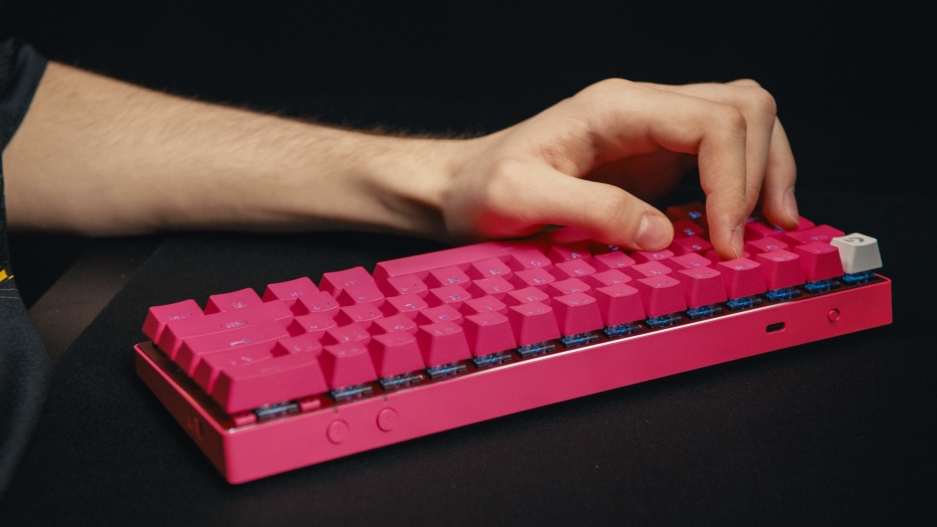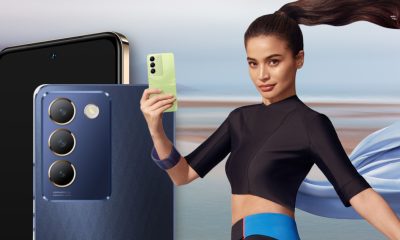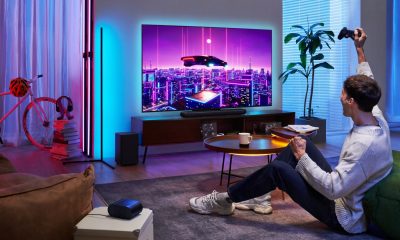Accessories
5 Google Pixel Buds alternatives: Real-time translations

When the Google Pixel Buds were announced, the reaction was along the lines of: “Google’s Pixel Buds translation will change the world.” But, the first thing I thought was, I wonder how it compares to what’s already out there?
I’m a native English speaker, who doesn’t have the best nack for languages. I also live in Taiwan which is a Chinese-speaking country, and I run a German-language website. There is no one more ready for a real-life Bable fish than I am.
Before I head into the Pixel Bud Alternatives, let’s take a quick look at the device that’s turning heads.
Google Pixel Buds
The Pixel Buds are neck buds, not truly wireless earbuds.
To start a translation, you hold your finger down to the earbud and say, “Help me speak French,” and speak a phrase. When you lift your finger, the Translate app speaks and displays your translation. Then, the person you’re speaking to holds a button down on your phone and says their reply, which you hear in your ear.
I’m a little dubious that this is any more convenient than just passing your phone back and forth and doing everything there, but it’s nice that only one set of translations is done over the phone’s speaker. A fairly natural voice does the translation, which is a step up from what we currently hear through Google Translate. This isn’t real time, but it’s very fast.
It doesn’t work offline and the Pixel Buds will eventually be able to translate between 40 languages, but so far, it only translates Japanese.
Google says they should last about five hours on a charge; the case can charge them four times.
I found even more offline translators at StartUp LaunchPad. Found at the Global Sourcing Fair, StartUp Launchpad is a Hong Kong Conference that showcases brand new startups looking for distributors. This happens twice a year and Mobile Geeks has made a habit of attending since it gives a sneak peek at the technology trends that are coming out of China to the rest of the world.
Le Trans
Le Trans is about the size of a bar of soap and can translate 29 languages, which is a lot of combinations! They’re mostly using Google’s translation library but have added in a few others, as well. You use an app to select which languages are being translated but it doesn’t work offline, meaning it’s not a great solution if you’re traveling.
LeTrans will be launching on Kickstarter in December with a shipping date for sometime in 2018. I did get to go hands-on, but the sample wasn’t working, so I’m reserving judgment on this until I have working samples and a price point.
Travis the Translator
Travis launched on Indegogo back in April and raised US$ 1.63 million in funding. Travis can translate 80 languages, 20 of which work offline. It’s not a headset like the Pixel Buds; it’s a MiFi-like pod that has a built-in speaker and headphone jack, so you can plug in your own.
Travis works for up to 12 hours and uses AI to become more intelligent. It works to understand your accent better and provide more accurate translations taking context into account. As you see in the video above, you can just place Travis between you and carry on a normal conversation. You have to wait for the translation to be read out, but it’s very fast and natural.
Travis doesn’t provide a full list of what translation engines they’re using but claims the best translation engine for each language is different, which is why they are using so many solutions. This makes Travis more interesting than Pixel Buds, which as far as I know, just uses Google Translate.
You can pick up Travis for US$ 169 plus shipping through their Indiegogo campaign, but the price will rise to US$ 229 when they go on sale. Travis is meant to ship towards the end of November to current backers and be ready for the market in the winter of 2017.
So far, I think that Travis offers the most interesting solution for a live translation device. For a full list of all 80 languages, visit their website.
Pilot Translating Earpiece
Pilot fits into your ear, offers live translation of 15 languages, and will stream music, take calls, deliver notifications, or act as your phone’s personal assistant. You can share the earpiece with the person you’re having the conversation with so you can both have a translation device. I have strong feelings against sharing my earbuds with a stranger, so it’s a good thing that you can use the Pilot app on the phone to listen and translate.
Currently, Pilot is not available offline, but they’re planning on adding it later. You’re also dependent on using the app for translation and the app will be available for free in November so you can download it to find out if it’s any good.
Pre-orders of the Pilot Translating Earpieces start at US$ 249 (US$ 299 when it goes on sale) and come with free access to Latin/romance languages (French, Italian, Portuguese, Spanish, along with English). However, adding more languages like Arabic, Mandarin Chinese, German, Greek, Hindi, Japanese, Korean, Polish, Russian, Turkish, etc. will cost you more.
Ili Wearable Translator
Ili can be worn around your neck or simply held in your hand and pointed at people’s faces, like in the video above. Ili is around the same size as your phone, but it’s not as wide. It doesn’t offer instant translation and has 0.2 seconds of delay.
Ili isn’t a universal translator — it’s travel-focused — so this is the context of the content it has available. Due to its limited size and the fact that it’s offline, it essentially holds a translation dictionary.
That said, there is quite a lot encompassed in the travel: “Ili is here to help you when it comes to dining, shopping, finding transportation, and much more,” according to the company. If you believe their YouTube channel, these are quite a lot of scenarios.
The biggest issue/disappointment is that Ili is one way — one language to another, not back again. Forget having a conversation, Ili claims that its goal is to help you be understood by others. Understanding what’s being said to you will have to wait for another version.
Ili has support for three languages from English, meaning English to Spanish, Mandarin, or Japanese and two languages from Chinese.
Bragi Dash Pro
Bragi Dash Pro is currently available and Mobile Geeks has reviewed it. Though I can’t say we were impressed with the performance, I’m hopeful it’ll improve.
All you need to do to have a conversation with someone who speaks another language is throw Dash Pro earbuds in, and you’ll instantly be able to understand someone who’s speaking in one of 40 foreign languages.
The problem is that there’s no compelling reason to use the Dash Pro for translation, unless both people in the conversation are using the earbuds. You can’t hand one earbud off to the other person so they can also benefit from the translator. If the other person doesn’t have their own pair of headphones, you still have to hold your phone out so that the person you’re talking to has a microphone to talk into and a speaker to hear your own words translated into their language. Otherwise, they’d have to talk directly into your ear, and they wouldn’t get your voice translated back into their language. At that point, it’s far easier for you to both speak into — and hear translations from — the same device.
The earbuds act as an accessory for an app called iTranslate, which already claims five million monthly active users and is one of the more high-rated translation apps in both the Apple Store and on Google Play.
This article originally appeared on Mobile Geeks. Nicole Scott, who was GadgetMatch’s companion and guide to its very first StartUp Launch Pad experience, shared her experience on the bi-annual conference at the Global Sourcing Fair in Hong Kong.
SEE ALSO: Ideebank Mic is a portable karaoke machine
SEE ALSO: Nemonic mini printer prints sticky notes, doesn’t need ink!
[irp posts=”23754″ name=”Gululu water bottle is also a virtual pet”]

Accessories
Logitech introduces a dedicated shortcut for ChatGPT
Compatible with most keyboards and mice

Artificial intelligence is already meant to simplify a workflow. However, despite the ease, there are still a few ways to optimize the process. Today, Logitech has launched a new shortcut to launch ChatGPT straight from your mouse or keyboard.
Minus programmable hotkeys or buttons, there are hardly any built-in way to easily access an AI model. For a typical workflow, it still consists of manually opening the model on a separate window and keeping it within cursor’s reach throughout the day.
Logitech is simplifying the process by adding a dedicated shortcut for its devices. With a Logitech keyboard or mouse supported by the Logi Options+ app, users can program a keyboard or mouse button for the new Logi AI Prompt Builder.
Once activated, the AI Prompt Builder automatically accesses easy options for highlighted text. For example, users can easily rephrase or summarize the text. Likewise, they can input their own custom queries. By eliminating a few clicks and some typing throughout the day, the new tool hopes to save you time.
While most Logitech keyboards and mice are compatible with the new tool, it is also more easily accessible with the new Logitech Signature AI Edition Mouse. The new mouse has a dedicated button just for AI prompts. If you’re an AI power user, this one is perfect for you.
SEE ALSO: Logitech unveils G Pro X 60 gaming keyboard: Price, details

I’ve got a new favorite pair of headphones.
They look good, sound good, last long, are compact and portable.
Most of all? They are from a brand that I truly love.
But I’m getting ahead of myself.
Here’s are V Major reasons why I love the new Marshall Major V!

Logitech has unveiled its newest heavy-duty gaming keyboard: The Logitech G Pro X 60 Lightspeed gaming keyboard. The latest G Pro series addition is engineered in collaboration with top esports athletes, and promises exceptional performance and precision specifically for gaming.
The gaming keyboard is available in White, Black, and Magenta and retails for PhP 10,955. Customers may also choose between two GX Optical Switches configurations: tactile and linear. These upgraded switches boast faster and more precise actuation, as well as increased durability. The G Pro X 60 has a distinct design, with the keys quite elevated from the keyboard base.
As the model name suggests, the new offering is also the first Logitech product to boast of a 60% keyboard form factor. This portable keyboard allows users to have more space for dynamic mouse movements compared to full-sized keyboards.
The innovative Keycontrol feature, meanwhile, lets users assign up to 15 various shortcuts and combinations per key. Gamers will benefit from being able to tailor the keys specifically to their needs by customizing the keyboard keys with commonly used commands and audio and lighting effects.
The gaming keyboard also comes with Lightsync RGB. Users may choose from about 16.8 million colors and customize each key’s individual color. Connectivity-wise, users may use the keyboard via Bluetooth, USB, and 2:1 pairing with a PRO gaming mouse.
For more information about the Logitech G Pro X 60, visit the Logitech official website here.
-

 Accessories2 weeks ago
Accessories2 weeks agoApple Vision Pro Review: Two Months Later
-

 Features4 days ago
Features4 days agoFortify your home office or business setup with these devices
-

 Gaming1 week ago
Gaming1 week agoThe Rogue Prince of Persia looks like an ultra-colorful roguelite
-

 Philippines2 weeks ago
Philippines2 weeks agovivo Y100 to release in Philippines on April 27
-

 Deals2 weeks ago
Deals2 weeks agoSamsung Awesome April: Deals on Galaxy A series
-

 Gaming1 week ago
Gaming1 week agoStar Wars Outlaws release date revealed
-

 Accessories1 week ago
Accessories1 week agoLogitech unveils G Pro X 60 gaming keyboard: Price, details
-

 Deals1 week ago
Deals1 week agoTCL P635 TV: Big savings for TCL’s anniversary
























